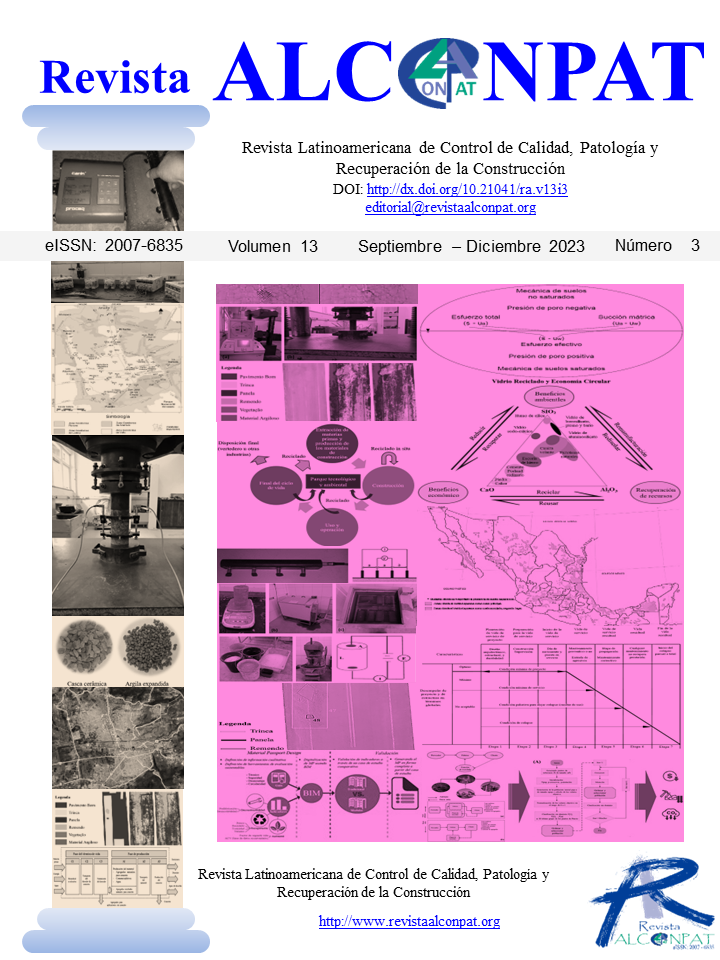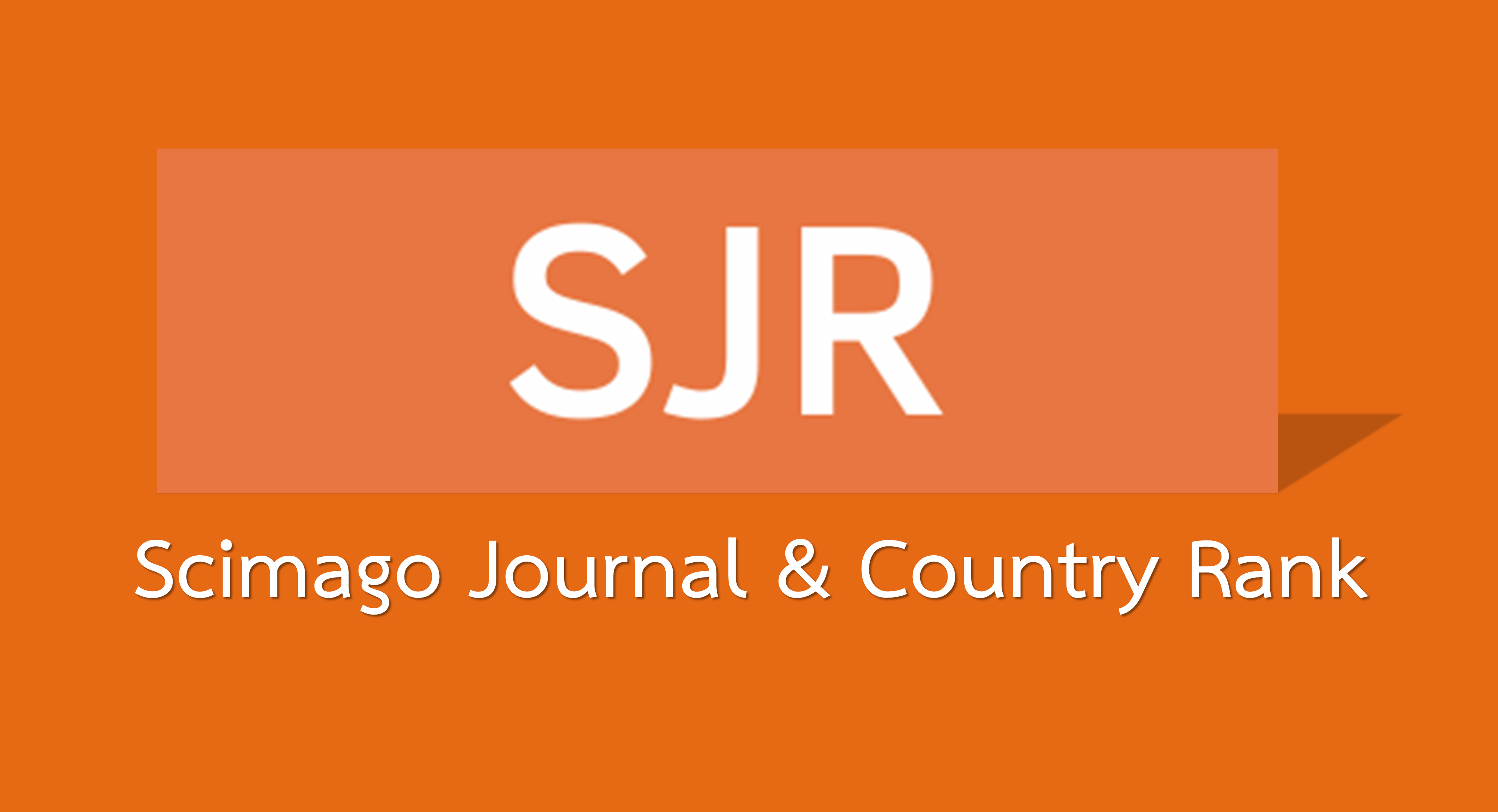Analysis of the mechanical properties of an expansive soil for the selfconstruction of a social housing
Abstract
This research article shows an analysis of an expansive soil of the Residencial Santa Fe, in the eastern part of the city of Santiago de Querétaro, Mexico, in order to determine the annual period in which it is more convenient to start the self-construction of a social housing. The mechanical properties of the soil (expansion pressure, friction angle and cohesion) are determined by geotechnical tests to find out the possible differential movements of the ground and thus avoid the short-term deficiencies that these houses suffer in our country, obtaining that the ideal period for the construction is October-March, otherwise, in the April-September period it is critical, for which the foundations increase in cost.
Downloads
References
Álvarez, A. et al. (2017), Contribución de las Frecuencias Características al Periodo de Vibración Dominante en la Ciudad de Querétaro, México. Revista de Ingeniería Sísmica No. 97: 84-101. https://doi.org/10.18867/ris.97.482.
Antonio, Y. (2014). “Evaluación del impacto de la contaminación con diésel en las propiedades mecánicas de un suelo arcilloso”, Tesis de Maestría en Ciencias, Universidad Autónoma de Querétaro, p. 57 - 69. https://ri-ng.uaq.mx/handle/123456789/333
ASTM International. (2020). ASTM D7181-20 a Standard Test Method for Consolidated Drained Triaxial Compression Test for Soils. DOI: https://doi.org/10.1520/D7181-20
ASTM International (2010). ASTM D5298-10 a Standard Test Method for Measurement of Soil Potential (Suction) Using Filter Paper. DOI: https://doi.org/10.1520/D5298-10
ASTM International (2019). ASTM D837-19 a Standard Test Method for Methylene Blue Index of Clay. DOI: https://doi.org/10.1520/C0837-09R19
ASTM International (2007). ASTM D422-07 a Standard Test Method for Particle-Size Analysis of Soils. DOI: https://doi.org/10.1520/D0422-63R07
ASTM International (2010). ASTM D4318-10 a Standard Test Methods for Liquid Limit, Plastic Limit, and Plasticity Index of Soils. DOI: https://doi.org/10.1520/D4318-10
ASTM International (2008). ASTM D4546-08 a Standard Test Methods for One-Dimensional Swell or Collapse of Cohesive Soils. DOI: https://doi.org/10.1520/D4546-08
Carraco J. C. (2017). “Implementación de Ensayos de Succión en Suelos Parcialmente Saturados y Análisis de Resultados en Suelos Residuales”. Tesis de Ingeniería Civil. Universidad de Chile, p. 7-9.
Casanova, M. (2018). “Modelación elastoplástica de la curva de retención de agua en suelos parcialmente saturados”. Tesis de maestría. Universidad Politécnica de Catalunya. Barcelona, España. p. 15.
Conagua (2022). “Precipitación por Entidad Federativa y Nacional”. Comisión Nacional del Agua.
https://smn.conagua.gob.mx/tools/DATA/Climatolog%C3%ADa/Pron%C3%B3stico%20clim%
C3%A1tico/Temperatura%20y%20Lluvia/PREC/2022.pdf. 05/01/2023.
Flores, I. et. al. (2019), Estabilidad de taludes durante un desembalse rápido en presas de tierra con suelos parcialmente saturados”. Ingeniería y Desarrollo, p.15. https://doi.org/10.14482/inde.38.1.624.15.
Guerrero, C. (2013). “Interacción Suelo-Estructura en Arcillas Expansivas”. Tesis de Maestría. Universidad Nacional Autónoma de México, p. 11-15.
López T. et. al. (2014), Análisis de estructuras huecas invertidas colocadas sobre suelos expansivos. Sociedad Mexicana de Ingeniería Geotécnica: 1-2. http://www.smig.org.mx/admArticulos/eventos/19_XXVII_Reunion_Nacional_de_Ingenieria_Ge
otecnica/36_Reunion_Nacional/83_SUELOS_NO_SATURADOS/A10LOLT_1.docx
Lezama, J. M. (2017). “Estudio del índice de reactividad en suelos expansivos bajo diferentes condiciones de esfuerzo aplicado y humedad inicial”, Tesis de Maestría en Ciencias, Universidad Autónoma de Querétaro, p. 32-38.
Massarsch, K.R. (1979). “Lateral Earth Pressure in Normally Consolidated Clay”. 7th European Conference on Soil Mechanics and Foundation Engineering, Brighton, Proceedings, Vol. 2, pp. 245-249.
Montes, E. (2018). “Estabilización de suelos y eliminación de fenol mediante subproductos de la industria avícola”, Tesis de Doctorado, Universidad Autónoma de Estado de México, p. 47, 79-80.
Musso, J. y Suazo, G. (2019) “Determinación de la curva de retención de agua para relaves multimetálicos de la industria minera de Chile y Proyectos 25”, p. 22-29. http://dx.doi.org/10.4067/S0718-28132019000100022.
Nelson J. D. et. al. (2015). “Foundation Engineering for Expansive Soils”. John Wiley & Sons, Inc. New Jersey, United States of America, p. 30-38.
Torres, C. A. et al (2016). “Manejo agronómico de los Vertisoles en México: una revisión”. Terra Latinoamericana, 34(4), 457-466. Recuperado en 10 de abril de 2023, de http://www.scielo.org.mx/scielo.php?script=sci_arttext&pid=S018757792016000400457&lng=es&tlng=es. ISSN 2395-8030.
Yáñez, N., D. Dec, J. Clunes y J. Dörner. (2015). “Estimación de la curva de retención de agua de un Andisol bajo un cultivo de arándano, a través de funciones de pedotransferencia”. Agro Sur 43 (3): 63-72. DOI: https://doi.org/10.4206/agrosur.2015.v43n3-07
Zepeda, J. A. y Castañeda, A. H. (1989). “Distribución de suelos expansivos en la República Mexicana”. Curso Internacional de mecánica de Suelos Arcillosos. J. Alfredo Zepeda Garrido. México
_______________________________
License in effect from September 2020
You are free to:
- Share — copy and redistribute the material in any medium or format for any purpose, even commercially.
- Adapt — remix, transform, and build upon the material for any purpose, even commercially.
- The licensor cannot revoke these freedoms as long as you follow the license terms.
Under the following terms:
- Attribution — You must give appropriate credit , provide a link to the license, and indicate if changes were made . You may do so in any reasonable manner, but not in any way that suggests the licensor endorses you or your use.
- No additional restrictions — You may not apply legal terms or technological measures that legally restrict others from doing anything the license permits.
Notices:
You do not have to comply with the license for elements of the material in the public domain or where your use is permitted by an applicable exception or limitation .
No warranties are given. The license may not give you all of the permissions necessary for your intended use. For example, other rights such as publicity, privacy, or moral rights may limit how you use the material.





















.png)














